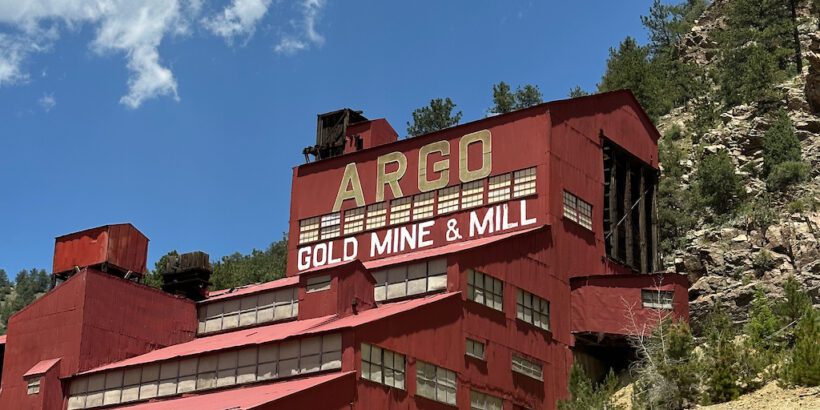One of the biggest attractions in Idaho Springs, Colorado, is the Argo Mill tour.
As you step inside this historic landmark you’ll be transported back in time to the early 1900s, immersing yourself in the well-preserved corridors that once buzzed with activity.
It’s an incredible experience to witness firsthand the machinery and infrastructure that played a crucial role in the mining industry of the era.
As you explore the corridors, you’ll learn fascinating details about the history of the mill and the various mining processes that were used to extract precious minerals from the surrounding earth.
It’s a unique opportunity to gain insight into the ingenuity and hard work that shaped the development of the region during that time period and below, I’ll tell you everything you need to know before your visit.
Table of Contents
What is the Argo Mill?
The Argo Mill is a historic gold mill located in Idaho Springs, Colorado, that played a major role in the Colorado Gold Rush for several decades. Today, visitors can take a tour of the mill, learn about its history, and even partake in some gold panning (and yes, you can keep what you find)!
It was built in 1891 and was one of the largest and most technologically advanced mills in the world at the time, processing ore from several mines in the area and becoming a major economic driver for the region.
Equally impressive was the Argo Tunnel, a remarkable engineering marvel that served a dual purpose. Not only did it effectively address the crucial mine drainage needs, but it also provided a more efficient means of transporting the valuable ore.
The Colorado and Southern Narrow Gauge Railroad ran directly in front of the Argo Mill and provided easy transport to the smelters and the United States Mint, which was located in Denver due to its proximity to these riches.
The Argo Mill was closed in 1943 following a fatal underground accident, which you will learn plenty about. However, it was restored in the 1970s and is now a popular tourist destination and a National Historic Landmark.

How to book a tour to The Argo Mill
If you want to visit the Argo Mill, I’d highly recommend that you book online. Some of the tours do sell out in advance and we had a 100% full tour when we visited, so you don’t want to wait around too long.
Here are the tour prices you can expect:
- Adults: $25
- Children (ages 5–16): $20
- Children age 1-4: $4
- Infants: Free
It is possible to just book a panning session but I’d highly recommend that you go for the full tour.
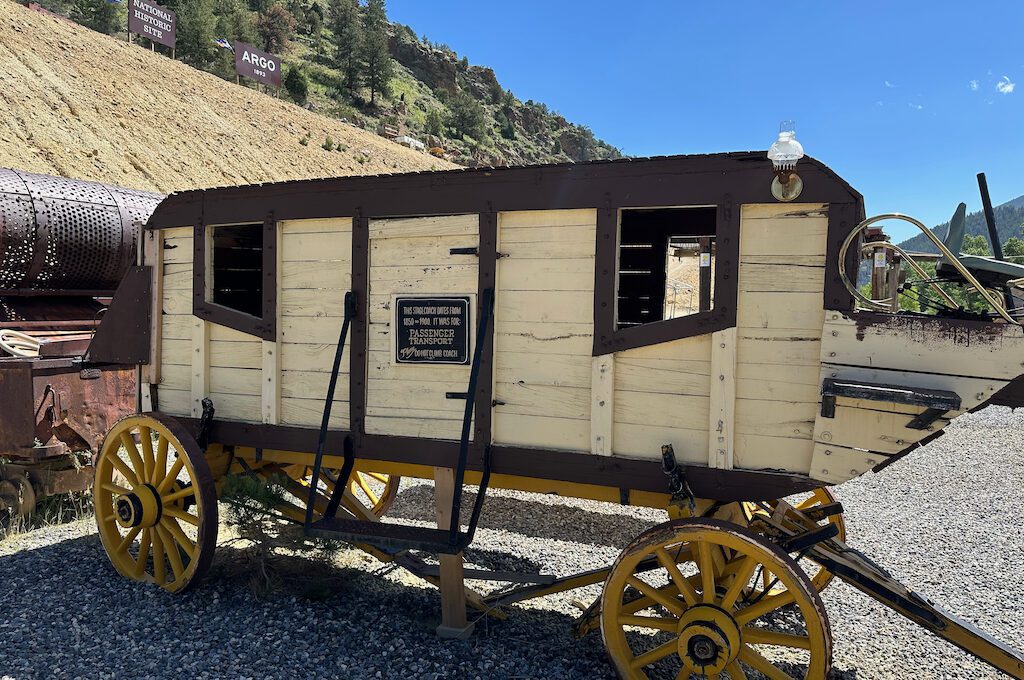
How to get to the Argo Mill
The Argo Mill is located in Idaho Springs, Colorado, right along I-70 about 40 minutes west of Denver.
If you pull up the address via Google Maps directions might try to take you to the rear of the mill but you can easily find the parking lot if you turn onto Riverside Drive and simply head towards the main parking lot.
You’ll see a building for Argo Mill tours and you can head inside to check-in at the cashier.
Our experience at The Argo Mill
The experience kicks off with an informative video introduction that delves into the significance of the Argo Mill and the Argo Tunnel.
You’ll gain a deep understanding of the pivotal role these structures played in the mining industry and their extensive network of tributaries. The video provides a captivating overview of the historical context, showcasing the immense scale of operations and the vital contributions made by the mill and tunnel in processing and transporting precious minerals
After the movie, it will be time to head outside and take the shuttle bus up to the top of the mill.
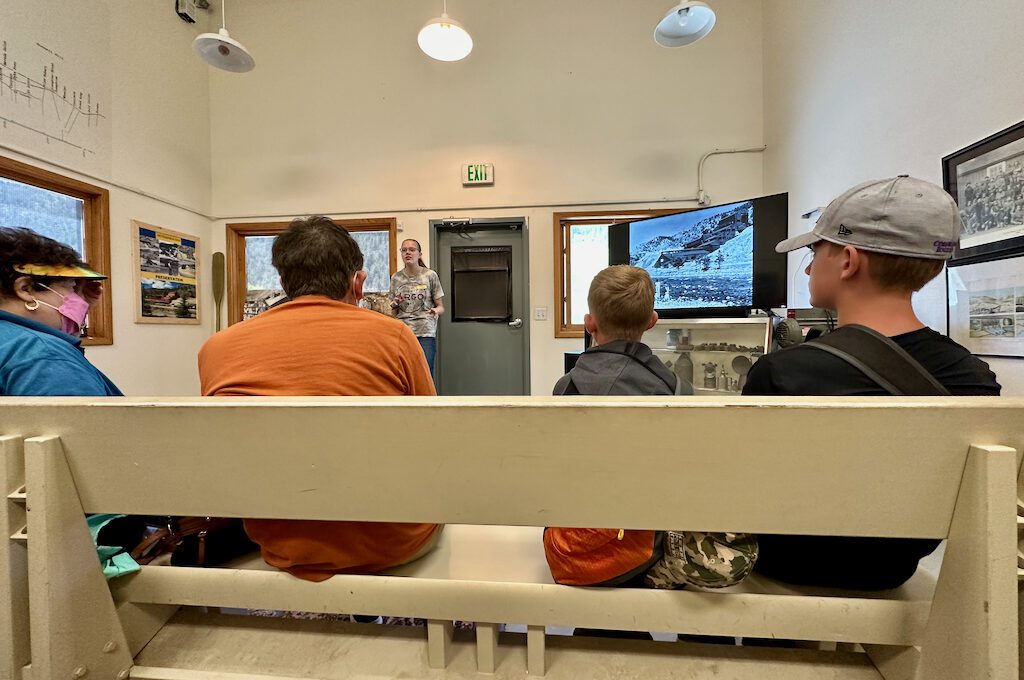
It’s a steep drop off from the side of the dirt road and there are no rails so if you are afraid of heights it’s best to just not look that way. Luckily, it’s a short journey.
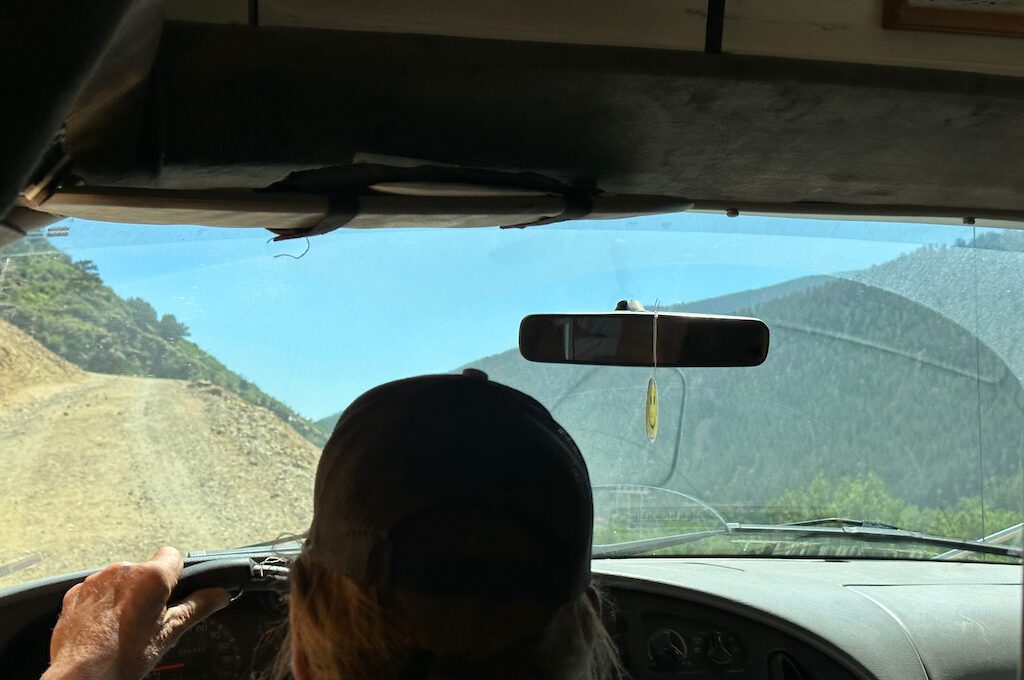
As you make your way across the top of the mill, you’ll have some great views of Idaho Springs and the lower portions of the structure. You really get a sense of how big the facility was.

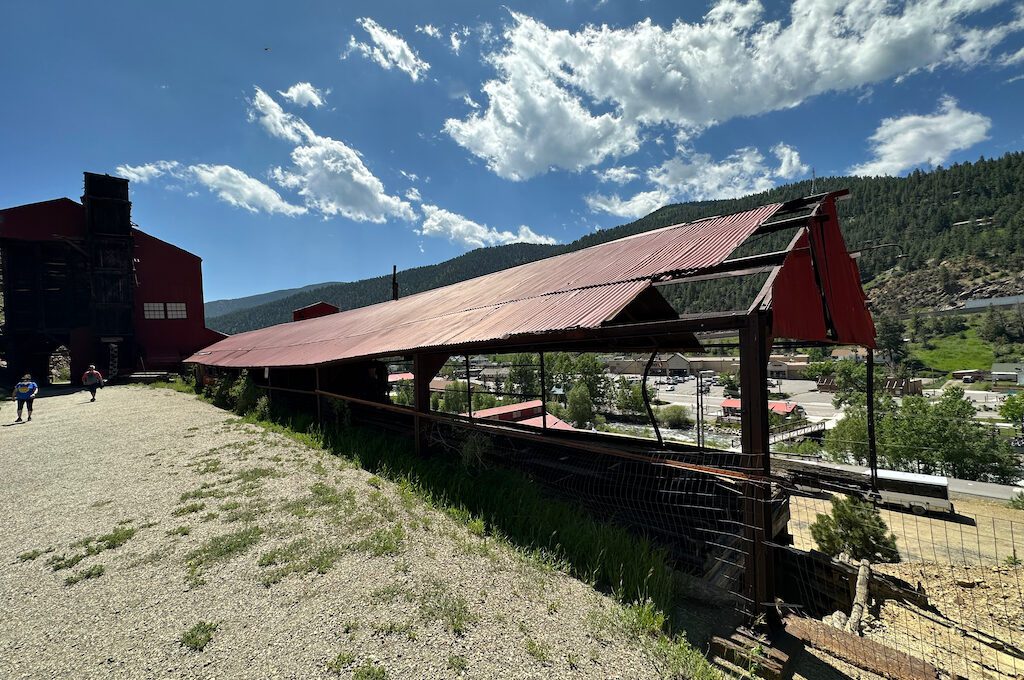
Once we made it to the top, the first destination to explore was the Argo Tunnel. But before heading inside you need to grab a hardhat.
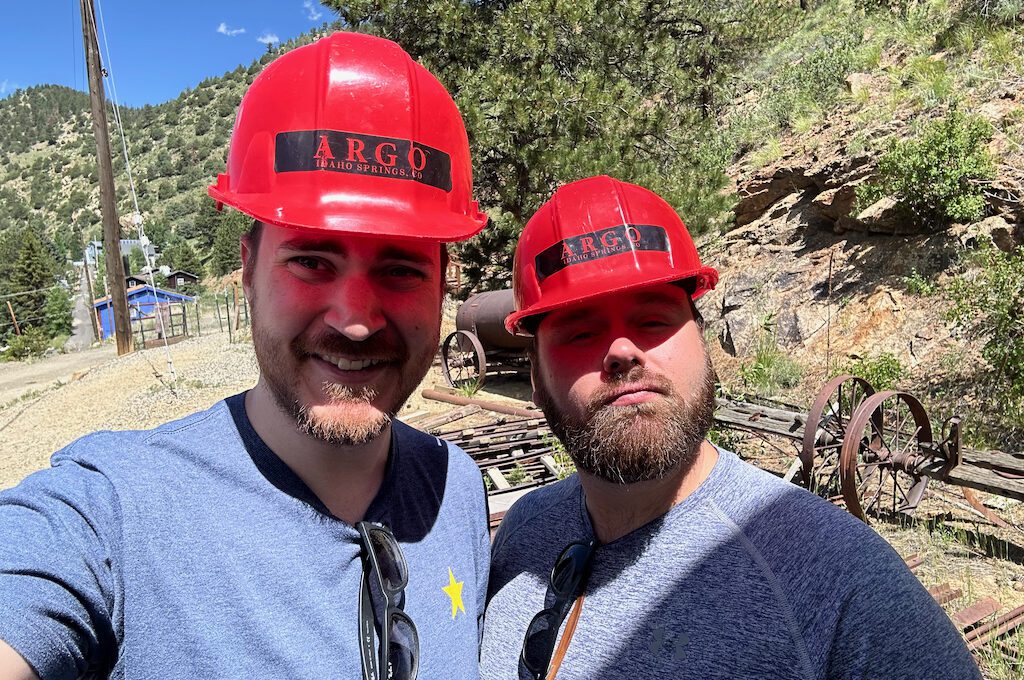

Then it’s time to venture inside the tunnel and explore its intriguing corridors, but don’t worry, you won’t be trekking for miles in a sketchy cave!
Your journey will take you approximately 60 yards into the Argo Tunnel, a remarkable feat of engineering that stretches a staggering 4.16 miles (6.69 km) in total.
As you delve into the well-lit tunnel, you’ll discover the story of the catastrophic flood that wreaked havoc within its depths. It’s both fascinating and horrifying to think about the power of mother nature that burst through this tunnel, now contained behind the mighty bulkhead structure.

You’ll then get a chance to explore the claims office where miners would come to register their mining claims and deal with legal matters pertaining to their operations.
The claims office served as a hub of activity, where miners would present their documentation, discuss property boundaries, and resolve disputes. It was here where contracts were negotiated, fees were paid, and the legal framework of mining operations was upheld.
Be sure to pop in for a couple of minutes to check out some of the historical photographs and articles.

Then it’s time to head inside the big red Argo Mill, which is the highlight of the tour in my opinion.
Taking in the scents of aged wood, metal, and earth, you’ll be transported back in time to the bustling world of gold milling. The mill is a remarkable sight to behold, with its intricate machinery and towering structures — you just imagine all the bustling activity that took place.
Inside, you’ll have the opportunity to explore all of the different levels of the mill. From the crushing and grinding rooms to the cyanide processing areas, lots of the original equipment is still intact.
Along the way, knowledgeable guides will share fascinating details about the various steps involved in the milling process, including how the ore was crushed, pulverized, and treated with chemicals to extract the precious gold.
Standing in the chambers once used for the stamp mill you can imagine the sounds of these contraptions rhythmically pounding on the rocks, generating a thunderous noise as pieces of ore were pulverized into tiny rocks.

It’s also quite powerful to learn about the challenges and obstacles that workers faced while working in the mills.
The conditions were often harsh, with loud machinery causing hearing loss over time, and the constant exposure to dust and hazardous chemicals leading to respiratory diseases. The toll on their health was significant, and many workers faced shortened life expectancies due to the demanding nature of their jobs.
Understanding the sacrifices and risks they endured adds a somber perspective to the history of the mills and reminds us of the human cost behind the quest for gold during the Colorado gold rush.

Once you’ve had the opportunity to explore several levels, you will eventually descend to the museum level. Here, a wide array of artifacts awaits, transporting you back to the mining era.
From old paystubs to captivating historic photographs, you can immerse yourself in the rich heritage of those days.
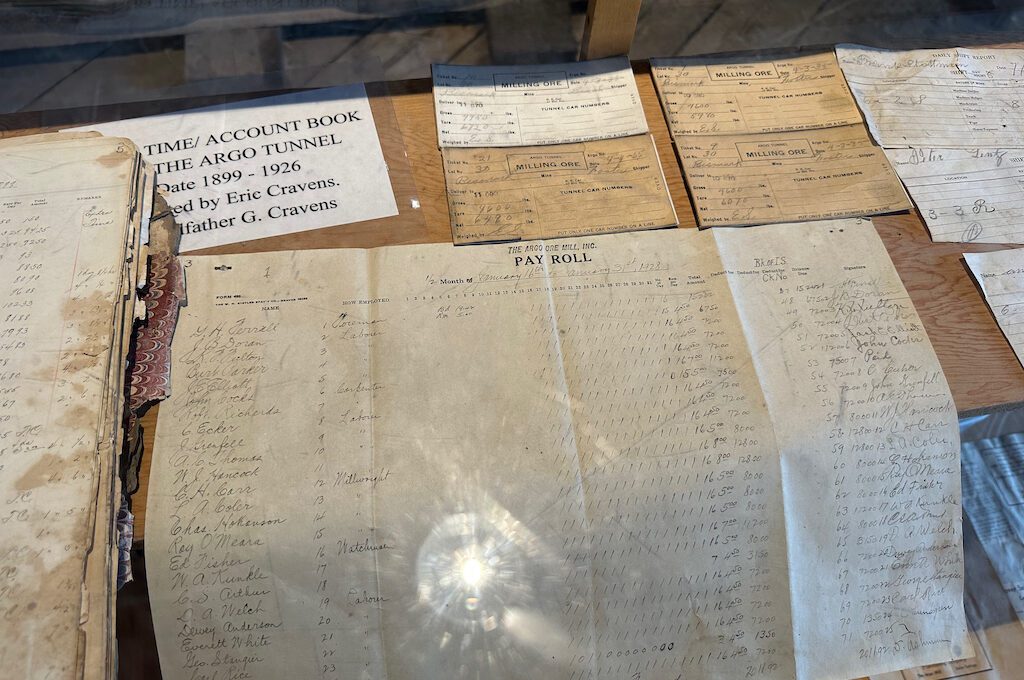
Additionally, you can even experience the sensation of handling some of the tools once wielded by the miners themselves.


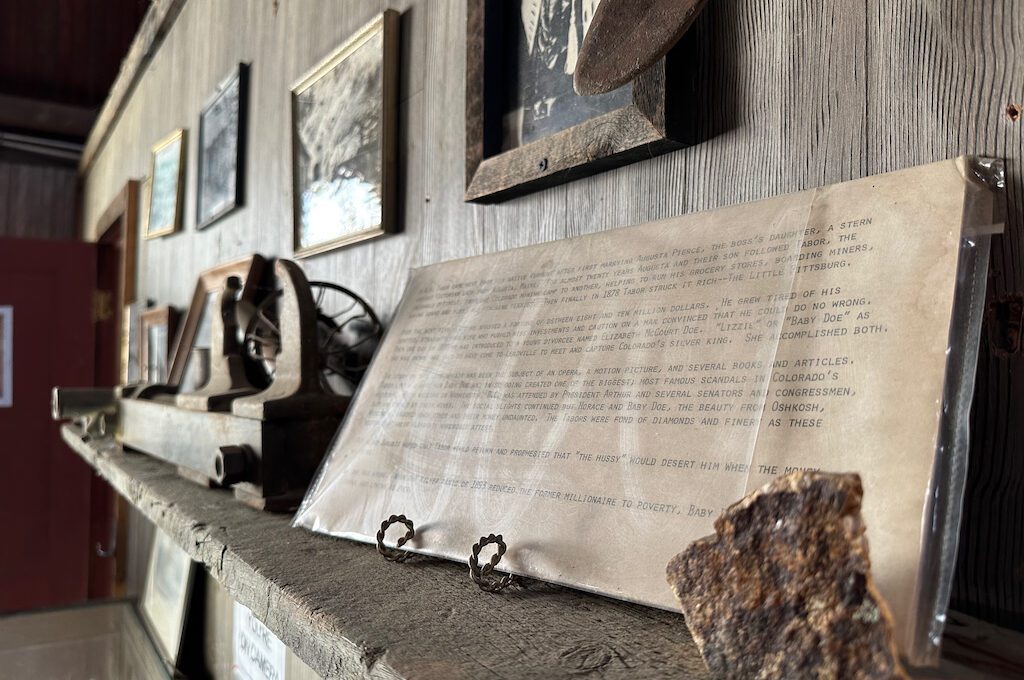
When you exit the museum, you’ll be back on the main ground level where even more old mining artifacts are on display, including a stamp mill that once crushed rocks to extract gold and other precious minerals.

Gold panning
Each tour ticket price includes gold panning lessons, giving you the opportunity to test your luck with an ore sample containing genuine “placer gold.”
Placer gold, formed through the erosion and deposition of gold by natural forces like water or wind, is commonly found in stream beds and riverbanks and that’s what you’ll be looking for.
The experienced guides will teach you the proper techniques of swirling the pan, allowing the heavier gold particles to settle at the bottom.
Tip: Record the steps because there are a lot and you’ll be able to reference them later, even if it’s another time!
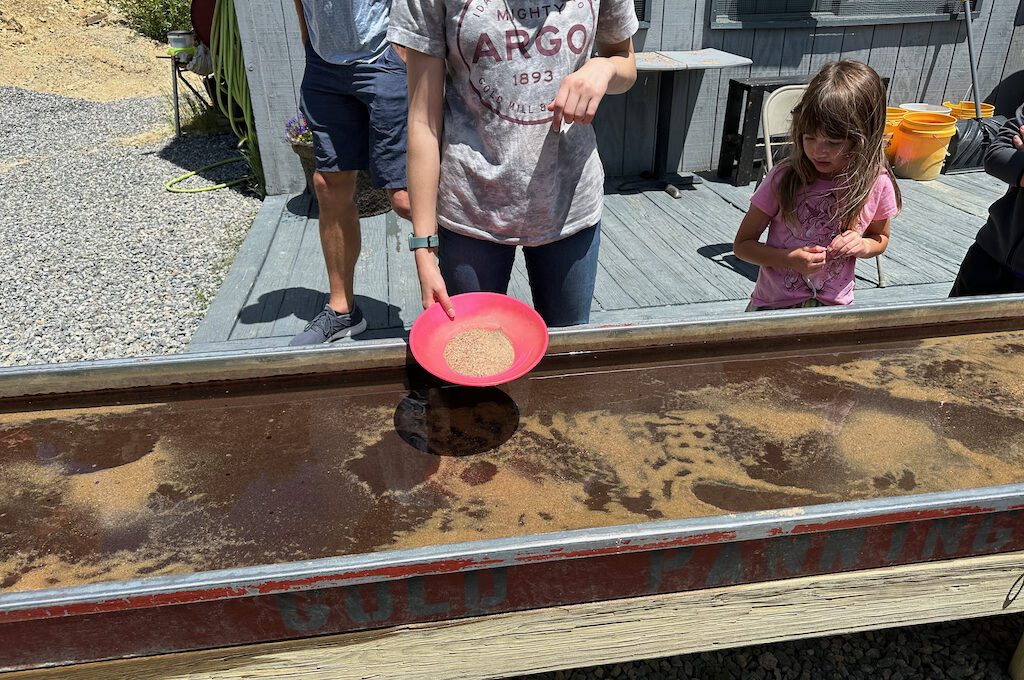
As you gently shake the pan, the lighter sediment washes away, revealing the glimmering specks of gold. It’s an exciting and hands-on experience that connects you to the exhilaration and anticipation that prospectors felt during the Colorado gold rush.
Whether you strike it rich or not, the thrill of uncovering genuine gold flakes is an unforgettable moment that brings the history of the gold rush to life.

On average, you’ll find about three little flakes of gold although some will find more than that (I had four).
I’m not going to lie, I suspect these pans are pre-loaded with gold flakes. But regardless, it was still really cool to find some little shining pieces of gold that I could take home.
Tip: To make it easier for your eyes to spot the shimmering gold, avoid choosing a spot in the shade.
It’s not just gold you’ll find; you may also find a variety of gemstones like Peridot, Topaz, Garnet, Quartz, Amethyst, Citrine, or Agates.
Once you finish up with the panning, you can head to the gift shop and find some souvenirs.


Final word
Overall, if you have an interest in the history of mining or the Colorado gold rush, this tour is a really interesting way to spend about an hour and a half. I learned a great deal throughout the tour and had fun with my first ever attempt at gold panning! If interested, I’d highly recommend that you book online!
Daniel Gillaspia is the Founder of UponArriving.com and the credit card app, WalletFlo. He is a former attorney turned travel expert covering destinations along with TSA, airline, and hotel policies. Since 2014, his content has been featured in publications such as National Geographic, Smithsonian Magazine, and CNBC. Read my bio.

